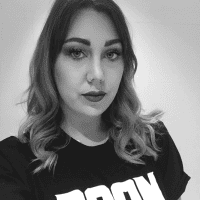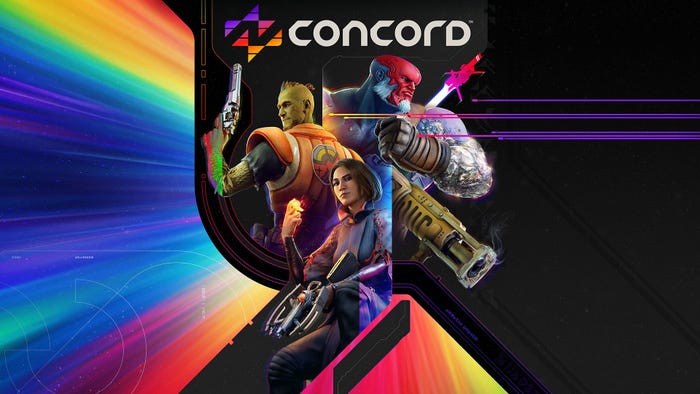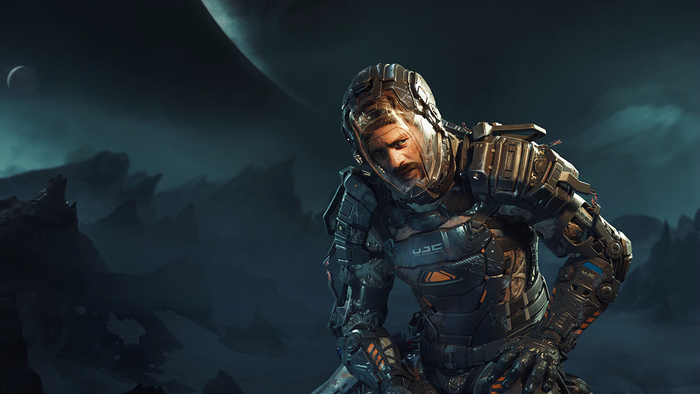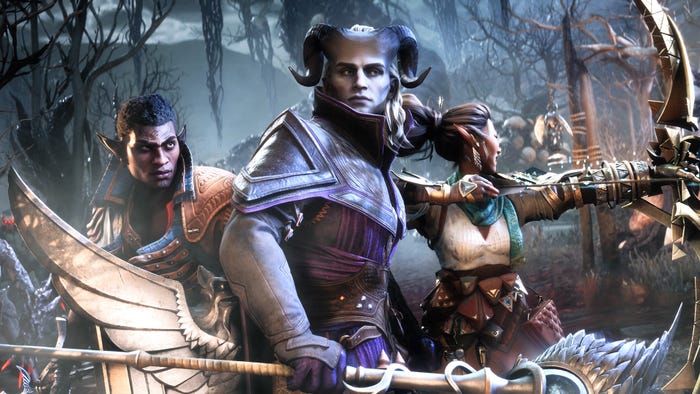Student Team to Successful Indie Dev: the We Were Here Series
The story of how Total Mayhem Games went from releasing We Were Here for free on Steam to having a three game series on PC, Xbox and PlayStation.

Where did it all start?
The end of the year is a good time for reflection, and as a team we’ve had a lot to reflect on over the last five years here at Total Mayhem Games. We’re the developers behind the three We Were Here games, originally released on Steam and now also available on Xbox One and PlayStation.
A little history: Total Mayhem Games started out as a team of game dev students at the Dutch University of Applied Sciences, working on a co-op puzzle adventure project that would become We Were Here. We released it on Steam for free, and it was a hit. The response was so positive that we decided to form a company and develop a sequel. The three games of the We Were Here series have been downloaded and played by over 5 million people so far.

We often hear people referring to us as ‘that student group’, when we’ve actually been running a professional indie studio for more than four years now - we definitely aren’t students anymore! It’s a big jump to go into indie game development full time, and we thought that people might be interested in our experiences. How did we evolve from a group of game students to being a successful, sustainable company with a Rotterdam office and 21 full-time staff?
It all started with We Were Here Too, the sequel to We Were Here and our first commercial title. We released it in 2018, almost exactly a year after we published We Were Here on Steam. Let's just say that releasing a game aiming to make money is a very different business to putting out a free game! We did some things right and some things wrong, and we'll get into the details later. The short version is that We Were Here Too did well enough to justify another sequel, which was We Were Here Together! That would be released a year and a half later - these are short cycles for building games and it took a lot of work and planning. But it's essential to the next thing we want to discuss…
Going Commercial
We couldn’t release a school project commercially, so we released it for free to see what people thought. When people liked it (over 5 million of them to date in fact), we felt there might be an audience there, and decided to try releasing a commercial version.
We secured an investment after releasing We Were Here, because as a free game it obviously wasn't earning us anything, and we needed something to get us started as a real studio so we could work on We Were Here Too. Apart from paying studio rental and some other basics, we invested in a marketing partner close to the release of We Were Here Too. That company has experience working with indie studios and making the most of tight budgets, and by taking some of the weight off our own shoulders, it allowed us to focus more on our game. We made sure to release our first commercial title within a year - a lot of work!

This rapid development process was important because we wanted to build on the hype generated by people playing We Were Here. One advantage of our games is that they’re attractive to streamers in a similar way to today’s hit Among Us; they’re social experiences with moments of tension and excitement, plus a healthy dose of humour. It’s great fun to watch people banter as they try to solve puzzles, or see how people react when they realize they’re trapped with the jester while their partner is oblivious to the danger. So we got quite a bit of streamer coverage of We Were Here, and we had loads of people playing the game because it was free. We wanted to release the first commercial We Were Here title before all the excitement had faded away.
We put a lot of effort into getting the people who had played We Were Here or seen it on a stream excited about a new game and made sure they heard about it when it was released. For instance, we offered a loyalty discount at launch to everyone who played the original We Were Here. It’s worth the time and energy to try and increase your early sales numbers - we got onto the first pages of Steam New and Trending (super exciting to see) and the Top Sellers categories due to good first day sales, and that of course then led to more sales!
Another interesting sale related tidbit - We Were Here Too was part of a Humble Choice bundle (back when it was called Humble Monthly), and interesting that actually boosted our non-Humble Bundle sales after the event! This might be related to being a co-op game - perhaps some people got the game in the Humble Bundle, and then asked their friends to buy the game so they could play together? Either way, it was a pleasant surprise!
All of this came together to make We Were Here Too a success, and we built on the same formula for the release of We Were Here Together, which also went very well! However, success as an indie studio isn’t solely about how many copies you can sell - you also need to be cost-effective and use your resources well.

For instance, we developed an effective system for designing and prototyping puzzles with minimum wasted effort if things don’t work out. You can read about our process in more detail in this dev blog, but in short we go from brainstorming ideas to paper prototypes to 3D white boxing, and only then to the first alpha tests with better feedback elements. This gave us four stages where a puzzle can ‘fail’ and we haven’t wasted too much time on it.
In the same vein, throughout development we were always on the lookout for ways to simplify things with smart cuts while staying true to our vision. For instance, in We Were Here Together we planned to have items you could hold like a shovel, but it quickly became clear that there were a host of UI issues with doing that nicely, along with gameplay concerns that would need to be ironed out. It wouldn’t have fit with our goal of making a game that was easy to jump into and play – the challenge was meant to come from puzzles, not figuring out how the interface works. In the end it was the right choice to cut them from the final product.
When it was useful we used outsourcing to our advantage as well, such as with the voice acting... most of it, anyway. It just so happens that our creative director has a lovely voice... and he plays the role of the Jester in We Were Here Together! Doing this bit of voice acting in-house works really well here because he’s invested in the character and has a deeper understanding of them than hired voice talent would have.
These are the kind of things we were busy with internally as we worked on our first two commercial titles, but making a game is one thing - we still needed to get it out there! We knew that we wanted to see the We Were Here series arrive on consoles sooner rather than later. The question was which consoles, when, and how.
Expanding our Reach
As a team we were big fans of the Xbox One, so it made sense to launch the series there first. We had discussions with the Xbox team at conventions like Rezzed in London, but more often it was via email or voice chats. A key part of the success of We Were Here on Xbox was the support and promotion on official channels, and that all goes so much smoother if you have a good interpersonal relationship with whoever your contact is at Xbox. For instance, we wanted to introduce people to our games on Xbox in a similar way to how people could play the original We Were Here for free on Steam. We’re grateful to the Xbox team for working with us to feature We Were Here as part of Xbox Games with Gold, allowing subscribers to try it for free. We combined this with pre-orders for We Were Here Too while the Gold deal was running! The original plan was to release all three games at roughly the same time on Xbox, but We Were Here Together ended up taking longer than we planned because we wanted to iron out some issues - we released it around 8 months after We Were Here Too.

Getting the games onto Xbox was quite the challenge (as evidenced by that delay to We Were Here Together), but provided valuable experience. To mitigate many of the issues we encountered for our future releases we’re planning to design the console versions alongside the PC version, rather than being a port of the PC version after it’s been released. There's often no silver bullet for technical challenges, you just need hands-on experience, or to hire someone who already has that experience. For us we chose to make sure our team had the experience, and asked for help where needed - but there are alternatives such as working with a software porting studio. If your budget or planning doesn't allow time to gain the necessary experience, you'd better rethink your features.
What about PlayStation? Well, we did say that we chose to release on Xbox One first, not only. It's important not to overreach, so we didn't want to tackle getting the games running on multiple new platforms at the same time. But following the successful Xbox release we were able to focus on getting PlayStation versions of the games ready to go, with a planned release date of February 23. But we had a special treat to whet everyone’s appetite before that: we released We Were Here for free on PlayStation, until February 22! It’s a great introduction to the series and the mystery of Castle Rock, and so far it’s broken all our CCU records for the series.
Conclusion
Much of our success can be traced back to the release of We Were Here for free on Steam. Letting people try our style of game provided a huge fan base before we even started developing We Were Here Too, and we made sure that we had a plan to bring those fans on board for our paid games. We've put a lot of work into the company and our games, but the value of word of mouth cannot be overstated. We also built on that success by creating a second and third game with the same core gameplay principles rather than trying to branch out somewhere totally new. We built experience with both game design and technically, and took our time to release the games on Xbox One. Now we’re preparing for the PlayStation release of We Were Here Too and We Were Here Together… with more exciting news on the way - but that’s for another day!
Read more about:
BlogsAbout the Author
You May Also Like








.png?width=700&auto=webp&quality=80&disable=upscale)
.png?width=700&auto=webp&quality=80&disable=upscale)